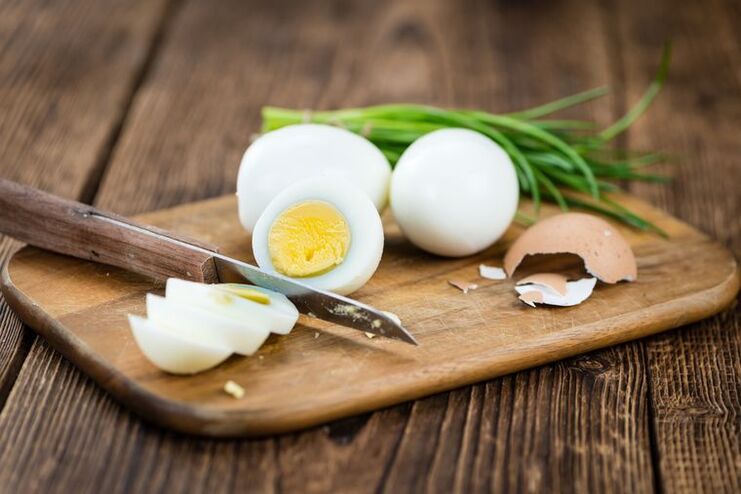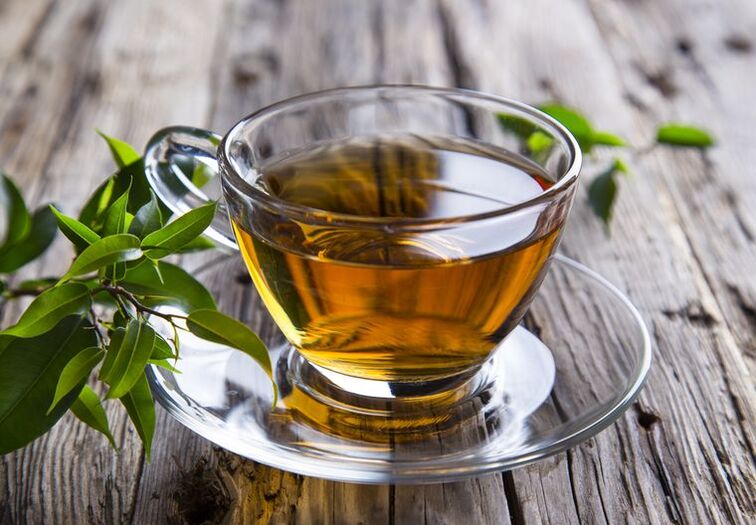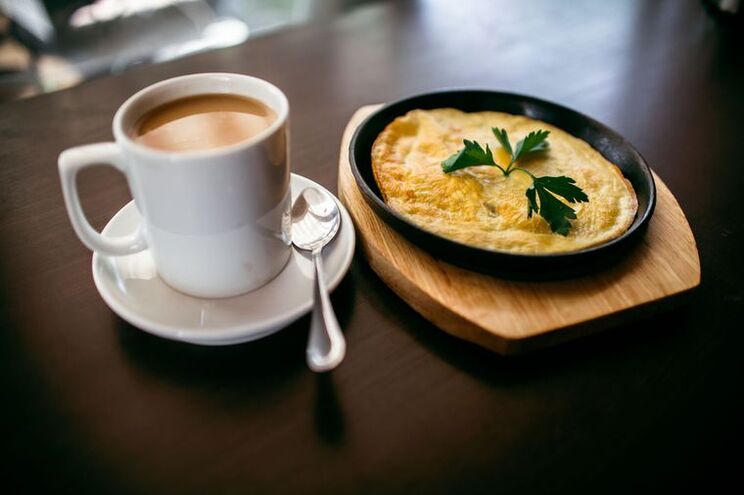Everyone knows about Megal's "Japanese" diet.But some people know that they have a choice that allows the use of non -food products at all.What can be eaten in the "Japanese", read in the article.

The unpredictable "Japanese" diet is a popular weight loss technique, it has won the trust of many women and men because of its effectiveness.The principle of action is low, rich in protein, activates the fat burning process in the body.Traditional Japan lasts 21 days: 7 days of preparation, 14 days of diet and 4 weeks out.
Most weight loss notes are missing that this technique requires strong psychological and motivational preparation.However, the result is effort: within 14 days ("classic" version), you can lose 5-15 kg - depending on the original weight.In addition, the main step is to get out of a diet that does not require less exposure.If you do not violate the situation, overweight problems will remain in the past.
Rule
- Just use this product.
- Day and food sequences cannot be changed.
- Salt, sugar, alcohol, sugars and flour products (except for this) are completely excluded from the diet.
- Every day you need to drink 1.5-2 liters of clean water without gas.
- If you do not use coffee, drink green tea without additives and flavors.
- Zucchini can be replaced with one of the following products: beet, pumpkin, boiled or fried carrots, tsukkini, paste root.This replacement will not affect the results of weight loss (subject to all rules).
- Zucchini (or alternative zucchini vegetables) can be roasted in foil and with the addition of teaspoons of vegetable or olive oil.
- Raw eggs can be excluded or replaced with boiled.
- It is allowed to take green tea or herbs between foods.
- Before you start, you should consult a specialist.
- You can repeat no more than twice a year.
Advantage
- Effective weight loss in a short time.
- The availability of products provided.
- Certain menus (regardless of the value of food and energy of the dish).
- Three meals (easily combined with research or work).
- The body is cleaned from toxins, because for two weeks you do not take sugar, alcohol and salt.
- Squirrels are present in sufficient quantities - this prevents the loss of muscle mass.In addition, a lot of energy is spent on digestion and protein assimilation, as metabolism is accelerated.
Harm
- Low calorie content of diet.
- The ratio of protein, fat, unbalanced carbohydrates and deficiency of basic vitamins, macros and trace elements.As a result, it is deteriorating in the skin, nails and hair, decreased immunity.Therefore, during the Japanese diet, complex vitamins must be taken.
- Lack of full breakfast prevents the body needed for her in the morning energy and increases the risk of evening.
- Big holidays between food.
- The transition to regular nutrition can be a quick return.
Preparation
Body preparation is an important stage in the Japanese salt diet.A week before it starts to leave fast food, minimize the amount of candy, flour and fatty dishes, reducing the normal portion of 20%-Your high-speed diet should be reduced by 500 calories.Try dinner for at least three hours before going to bed and drink at least 1.5 liters of clean water daily.After waking up, make sure you drink 250 ml of water at room temperature.This activates the metabolism and will better move the shortage of breakfast during this period.
Menu
For 7 days
Day 1
- Breakfast: Black coffee.
- Lunch: 2 boiled eggs, 150 g of salad (Cabbage + carrot + 1 teaspoon vegetable oil), 200 ml of tomato juice.
- Dinner: 150 g of boiled pollen, 100 g Beijing Cabbage + 1 teaspoon olive oil.

Day 2
- Breakfast: toast is made of rye bread (15 g), black coffee.
- Lunch: 200 g Baked Cod, 150 g of Beijing cabbage + 1 teaspoon vegetable oil.
- Dinner: 200 g of boiled meat, 200 ml kefir (2.5% fat).
Day 3
- Breakfast: Black coffee.
- Lunch: 1 boiled egg, 150 g of grated carrots + 1 teaspoon vegetable oil.
- Dinner: 2 apples.
Day 4
- Breakfast: toast is made of rye bread, black coffee.
- Lunch: 1 average zucchini, fry in vegetable oil, 2 apples.
- Dinner: 200 g of boiled meat, 2 boiled eggs, 150 g of Beijing cabbage.
Day 5
- Breakfast: 150 g of grated carrots with lemon juice.
- Lunch: 200 g of baked baked, 200 ml of tomato juice.
- Dinner: 200 g of baking, 150 g of Beijing cabbage.
Day 6
- Breakfast: Black coffee.
- Lunch: 300 g of boiled chicken breast, 150 g of salad (beijing cabbage + carrots).
- Dinner: 2 boiled eggs, 150 g of grated carrots + 1 teaspoon vegetable oil.
Day 7
- Breakfast: Green tea.
- Lunch: 200 g of boiled meat, 200 g from any fruit (by season).
- Dinner: any previous choice.
For 9 days
The 7-day menu from the 9-day Japanese diet is no different from the 7th day option.
Day 8
- Breakfast: Green tea.
- Lunch: 200 g boiled meat, 2 apples or 1 orange.
- Dinner: 200 g of baking, 150 g of Beijing cabbage.
Day 9
- Breakfast: Black coffee.
- Lunch: 200 g of salad (carrot + cabbage), 150 g of boiled chicken breast, 2 boiled eggs.
- Dinner: 150 g of grated carrots + 1 teaspoon vegetable oil.
Products needed for the 13 -day and 14 -day Japanese diet
- Natural coffee (in cereals or soil) - 1 package.
- Fresh eggs - 20 pieces.
- Fish Fillet - 2 kg.
- Green tea without seasoning - 1 package.
- Beef - 1 kg.
- Chicken Breast - 2 kg.
- Olive oil.
- Vegetable oil.
- Carrot - 2 kg.
- Cabbage is fresh or Beijing - 2 - 4 pieces (depending on size).
- Zucchini - 1 kg.
- Apple (or other fruits) - 1 kg.
- Tomato juice (sugar -free) - 2 l.
- Kefir - 1 l.
- Lemon-3-5 pieces.
- Rye bread - 1 bread.

For 13 days
Day 1
- Breakfast: Black coffee.
- Lunch: 2 boiled eggs, 150 g of salad (Cabbage + carrot + 1 teaspoon olive oil), 200 ml of tomato juice.
- Dinner: 200 g Cod boiled.
Day 2
- Breakfast: Black coffee and crackers made of rye bread (15 g).
- Lunch: 200 g of boiled pollen, 150 g of salad (cabbage + carrots + 2 tablespoons olive oil).
- Dinner: 100 g of boiled meat, 200 ml of tomato juice.
Day 3
- Breakfast: Black coffee and crackers made of rye bread (15 g).
- Lunch: 1 average zucchini, fry in vegetable oil.
- Dinner: 2 boiled eggs, 200 g boiled meat, 100 g Beijing Cabbage + 1 teaspoon vegetable oil.
Day 4
- Breakfast: Black coffee.
- Lunch: 1 raw egg, 100 g grated carrots + 1 teaspoon vegetable oil, 15 g of solid cheese.
- Dinner: 200 g of fresh fruits for this season.
Day 5
- Breakfast: 100 g grated carrots + 2 tablespoons lemon juice.
- Lunch: 200 g Baked Cod, 200 ml of tomato juice.
- Dinner: 200 g of fruit.
Day 6
- Breakfast: Black coffee.
- Lunch: 300 g of boiled chicken breast, 100 g of salad (cabbage + carrot).
- Dinner: 2 boiled eggs, 100 g grated carrots + 1 teaspoon olive oil.
Day 7
- Breakfast: Green tea.
- Lunch: 200 g boiled meat, 150 g of fruit.
- Dinner: 2 boiled eggs, 100 g grated carrots + 1 teaspoon olive oil.
Day 8
- Breakfast: Black coffee.
- Lunch: 250 g of boiled chicken breast, 150 g of salad (carrot + cabbage).
- Dinner: 2 boiled eggs, 150 g of grated carrots + 1 teaspoon vegetable oil.
Day 9
- Breakfast: 100 g grated carrots + 2 tablespoons lemon juice.
- Lunch: 200 g of grilled pollen, 200 ml of tomato juice.
- Dinner: 200 g of fruit.

Day 10
- Breakfast: Black coffee.
- Lunch: 1 raw egg, 150 g grated carrots + 1 teaspoon vegetable oil, 15 g of solid cheese.
- Dinner: 200 g of fruit.
Day 11
- Breakfast: black coffee, crackers from bread rye (15 g).
- Lunch: 1 fried zucchini in vegetable oil.
- Dinner: 2 boiled eggs, 200 g of boiled meat, 100 g of fresh cabbage + 1 teaspoon vegetable oil.
Day 12
- Breakfast: black coffee, crackers from bread rye (15 g).
- Lunch: 200 g of baked baked, 150 g of fresh cabbage + 1 teaspoon olive oil.
- Dinner: 100 g boiled meat, 200 ml kefir (2.5% fat).
Day 13
- Breakfast: Black coffee.
- Lunch: Not provided.
- Dinner: 2 boiled eggs, 200 g boiled cabbage + 1 teaspoon olive oil, 200 ml of tomato juice.
For 14 days
Day 1
- Breakfast: Black coffee.
- Lunch: 2 boiled eggs, 200 g boiled cabbage + 1 teaspoon vegetable oil, 200 ml tomato juice.
- Dinner: 200 g of boiled or grilled.
Day 2
- Breakfast: 20 g of rye bread, black coffee.
- Lunch: 200 g of boiled pollen, 150 g of boiled cabbage + 1 teaspoon vegetable oil.
- Dinner: 100 g boiled meat, 200 ml kefir (2.5% fat).
Day 3
- Breakfast: 20 g of rye bread, black coffee.
- Lunch: 1 average zucchini, fry in vegetable oil.
- Dinner: 200 g of boiled beef, 2 boiled eggs, 150 g of fresh cabbage + 1 teaspoon vegetable oil.
Day 4
- Breakfast: 1 fresh carrot, black coffee.
- Lunch: 200 g Pollock boiled, 200 ml of tomato juice.
- Dinner: 200 g of fruit.
Day 5

- Breakfast: 1 fresh carrot, one lemon juice (you can melt with water).
- Lunch: 200 g boiled, 200 ml tomato juice.
- Dinner: 200 g of fruit.
Day 6
- Breakfast: Black coffee.
- Lunch: 300 g of boiled chicken breast, 200 g of salad (fresh cabbage + carrot + 1 teaspoon vegetable oil).
- Dinner: 2 boiled eggs, 1 fresh carrot.
Day 7
- Breakfast: Green tea.
- Lunch: 200 g of boiled meat, 2 apples.
- Dinner: any previous choice, except the 3rd day.
Day 8
- Breakfast: Black coffee.
- Lunch: 300 g of boiled chicken breast, 150 g of salad (cabbage + carrot + 1 teaspoon vegetable oil).
- Dinner: 2 boiled eggs, 1 fresh carrot + 1 teaspoon vegetable oil.
Day 9
- Breakfast: 1 fresh carrot, one lemon juice.
- Lunch: 200 g boiled, 200 ml tomato juice.
- Dinner: 200 g of fruit.
Day 10
- Breakfast: Black coffee.
- Lunch: 50 g of hard cheese, 100 g grated carrots + 1 teaspoon vegetable oil, 1 boiled egg.
- Dinner: 200 g of fruit.
Day 11
- Breakfast: 20 g of rye bread, black coffee.
- Lunch: 1 average zucchini, fry in vegetable oil.
- Dinner: 200 g of boiled beef, 2 boiled eggs, 150 g of fresh cabbage + 1 teaspoon vegetable oil.
Day 12
- Breakfast: 20 g of rye bread, black coffee.
- Lunch: 200 g of boiled pollen, 150 g of fresh cabbage + 1 teaspoon vegetable oil.
- Dinner: 100 g boiled meat, 200 ml kefir.
Day 13
- Breakfast: Black coffee.
- Lunch: 2 boiled eggs, 200 g boiled cabbage + 1 teaspoon vegetable oil, 200 ml tomato juice.
- Dinner: 200 g of boiled or grilled pollen + 1 teaspoon vegetable oil.
Day 14
- Breakfast: Black coffee.
- Lunch: 200 g boiled or grilled, 150 g of fresh cabbage + 1 teaspoon olive oil.
- Dinner: 200 g of boiled meat, 200 ml kefir.
Out of the diet
The first week of leaving the Japanese diet is a very important period.Currently, the body continues to lose weight and adapt to new parameters, so it is important not to consume food, but slowly introduce regular products into the diet.They should be natural.
- In order for the results to be improved, to leave the diet should be gradually.The exit period should last twice.Therefore, the exit of the 14-day Japanese diet should take at least 28 days-4 weeks.
- In the first week, gradually increasing the part of the meat and fish - as much as 50 g, vegetables - by 100 g.
- For breakfast, use cereals provided on water (buckwheat, oats, rice) and omelets.Part of one time you should count -about 200 g.
- Add salt to the food gradually: at the beginning of release, use no more than 5 g of salt daily.
- During the day, you need to make 2-3 snacks from milk and fruit products.
- Replace the fruit dinner with a complete vegetable dish and protein (for example, 200 g of vegetable foods and steamed chicken cuts).
- Do not reduce the amount of protein food.
- Eat fractions (5-6 times a day).
Estimated menu to leave a Japanese diet for 2 weeks
Day 1-3
- Breakfast: Omlet 2 eggs and 150 ml of milk (2.5% fat), 1 bread, black coffee.
- Lunch: 200 g of boiled meat or 200 g baked, 100 g of fresh vegetables.
- Dinner: 100 g cottage cheese (5% fat) or 250 ml of kefir (2.5% fat) and 1 apple.
Day 4-6
- Breakfast: 200 g of oats in water (without sugar and oil).
- Snack: 1 orange, 1 kiwi.
- Lunch: 200 g of grilled chicken breast, 100 g of fresh vegetables (cabbage, carrots, pepper).
- Dinner: 200 g of boiled shrimp or 150 g of cottage cheese (7%fat), 1 cucumber.
Day 7-10
- Breakfast: 200 g oats on sugar -free water and oil, 2 toast (20 g each).
- Snack: 1 fruit.
- Lunch: 200 g of vegetable soup, 100 g of boiled beef.
- Snack: 100 g of natural yogurt.
- Dinner: 200 g of grilled chicken breast, 150 g of steamed steamed vegetables.

Day 8-14
- Breakfast: 200 g from any porridge with beans, dried fruits and honey (no more than the first teaspoon), 2 toasts (20 g each).
- Snack: 1 fruit, 100 g of natural yogurt or cottage cheese (5% fat).
- Lunch: 200 g of low chicken soup, 150 g of boiled chicken breast, 2 fresh cucumbers.
- Snack: 1 fruit or 150 g of natural yogurt.
- Dinner: 200 g of boiled shells, 150 g of vegetable stew.
- Snack: 200 ml of kefir (2.5% fat).
Sports during the Japanese diet
If your body is accustomed to certain levels of physical work (for example, morning run or fitness three times a week), then the frequency and intensity of the training cannot be improved - this can cause deterioration in well -being (losing strength, dizziness, nausea).It is recommended to do daily charging (20-30 minutes), at least one hour a day, replacing the elevator with a climbing step.
Contraindications
- Gastrointestinal tract disease (gastritis, gastroduodenitis, stomach or duodenum peptic ulcer).
- During pregnancy and during breastfeeding.
- Any chronic diseases of the kidney and liver.
- Anemia.
- Avitaminosis and hypovitaminosis.
- Acute infectious diseases.
- Diabetes.
- Zhelchokamenny disease.
- Any state in the severity.
- Chronic organ disease























